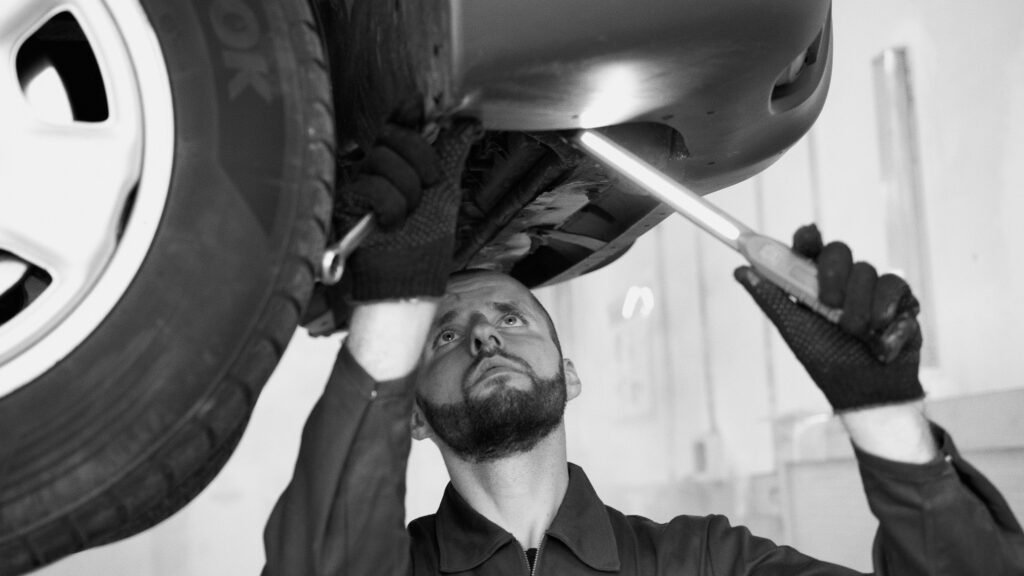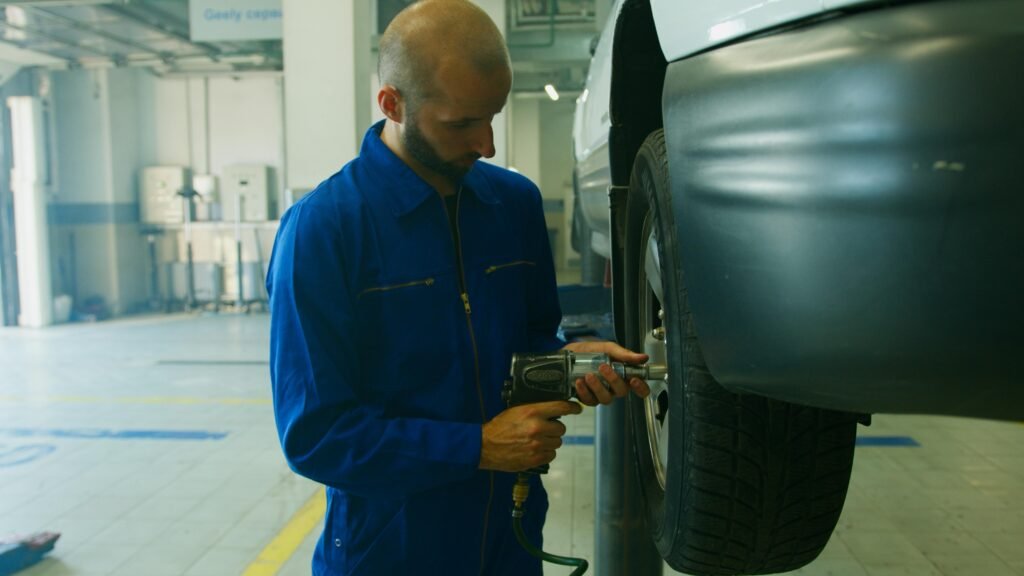Tire puncture repair cost is one of the most common concerns drivers face when dealing with a flat or damaged tire. Whether it’s a small nail picked up on the highway or a slow leak that leaves you stranded in a parking lot, knowing how much you’ll need to spend on repairs can save you stress, time, and money. In this guide, we’ll break down the real costs of tire puncture repair in 2025, explain the factors that influence pricing, and provide safety insights every car owner should know.
Key Takeaways
- Average Cost: $20–$60 for professional repairs, $10–$25 for DIY kits, $100+ if tire replacement is needed.
- Cost Drivers: Type of repair (plug, patch, or replacement), shop vs. mobile service, location, and emergency fees.
- Safety Rule: Not all punctures are repairable—sidewall damage usually requires replacement.
- Money Saver: Roadside assistance plans or tire warranties can cover the full cost.

Understanding Tire Puncture Repair
A tire puncture occurs when a sharp object like a nail, screw, or shard of glass pierces the rubber and causes air to escape. While the problem might seem simple, the repair method you choose determines both the safety and the cost.
- Plug Repair: Involves inserting a rubber plug into the puncture from the outside. It’s fast and cheap, but often considered less durable.
- Patch Repair: Applied from the inside of the tire. It’s more reliable and longer lasting.
- Plug-and-Patch Combo: The gold standard recommended by most safety organizations. It seals both the inside and outside of the puncture for maximum protection.
Average Repair Costs: In-Shop vs. Mobile
Repair costs vary depending on where and how you get the service:
- In-Shop Repairs: Typically range from $20–$50, depending on whether the repair is a plug, patch, or combo.
- Mobile Repair Services: Convenient but pricier, usually $40–$80 since the technician comes to your location.
- Regional Variation: Expect higher prices in urban centers and dealership service centers.
- Emergency Repairs: Late-night or roadside calls can run $100–$150, largely due to labor and travel fees.

Factors Influencing Cost
The tire puncture repair cost isn’t one-size-fits-all. Here are the key factors that determine your final bill:
- Damage Location & Severity
- Small tread punctures are inexpensive to fix.
- Large holes or sidewall damage almost always require full replacement.
- Tire Type & Brand
- Run-flat or specialty tires cost more to repair or replace.
- Labor & Geography
- Rates vary widely—big cities like New York or Los Angeles may be 30–50% more expensive than small towns.
- Emergency Service
- After-hours assistance or roadside calls add significant premiums.
- Warranties & Road Hazard Coverage
- Many tire warranties cover puncture repair or even full replacement free of charge.
Cost Breakdown by Repair Type
| Repair Type | Typical Cost | Notes |
|---|---|---|
| DIY Plug Kit | $10–$25 | Temporary, not always safe |
| In-Shop Plug Repair | $20–$40 | Quick, not as durable |
| Patch Repair | $25–$50 | Longer lasting |
| Plug + Patch Combo | $40–$60 | Industry recommended |
| Run-Flat Tire Repair | $50–$80 | Limited by manufacturer |
| Full Tire Replacement | $100–$300+ | Required if unrepairable |

Real-World Insights: What Car Owners Pay
Hearing from real drivers puts costs in perspective:
- Reddit users often report paying as little as $8 for a plug or around $30 for a patch at independent shops.
- Yelp averages indicate typical shop repair quotes fall between $50–$100.
- Personal Experience: Having worked as a mobile tire specialist, I’ve charged $60–$75 for roadside puncture repairs. Most drivers are happy to pay extra for convenience, especially if they’re stranded in unsafe or inconvenient locations.
Safety Considerations and Standards
Not every puncture can—or should—be repaired. According to AAA and NHTSA guidelines:
- Repairs are only safe if the puncture is in the tread and smaller than 1/4 inch in diameter.
- Sidewall damage is unsafe to repair and requires tire replacement.
- A plug-and-patch combination is considered the safest and most durable repair.
Preventative Tips & Cost-Saving Strategies
Want to avoid frequent tire puncture expenses? Here’s how:
- Regular Tire Checks: Inspect for nails, screws, and small leaks before they turn into flats.
- Keep a Plug Kit + Inflator: Affordable emergency tools that can help you avoid towing fees.
- Road Hazard Warranties: Often cost around $20–$40 when purchasing new tires and can save hundreds in the long run.
- Repair Over Replacement: If it’s safe to repair, doing so can save $100+ compared to buying a new tire.
Summary
In 2025, the tire puncture repair cost for most drivers ranges from $20–$60 for professional shop repairs, with DIY kits coming in at $10–$25. Mobile and emergency repairs are pricier, while unrepairable damage like sidewall punctures can push costs into the $100–$300+ replacement range.
The golden rule is simple: prioritize safety over cost savings. Spending a little more on a professional patch-and-plug repair—or a replacement when necessary—protects both your vehicle and your life. With preventive care, warranties, and the right tools, you can minimize future expenses and keep your vehicle safe on the road.


[…] tires happen to every driver, and knowing where to go for reliable repairs can save time and money. Firestone Complete Auto Care, with thousands of locations nationwide, has built a reputation for fast, affordable, and […]
[…] cooling system flush (also called radiator flush or coolant system flush) is a maintenance service that completely drains […]